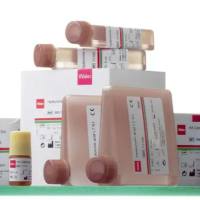Expressing Ribozymes in Plants
互联网
491
The hammerhead and hairpin ribozyme motifs were first identified and characterized in small, circular RNA molecules (satellite RNAs, viroids) associated with some diseases in plants (1 ). The ribozyme activity is necessary for replication of these RNAs, functioning to cleave linear concatameric forms to monomeric units. Since these naturally occurring ribozymes function in plants, the application of synthetic ribozymes for control of gene expression in plants seems reasonable. Despite this, there are relatively few reports of synthetic ribozyme activity in plant cells or whole plants (2 ,3 ) compared to the numerous publications of activity in animal and human cells (4 ,5 ). This is perhaps surprising, since it is generally easier to introduce DNA into plant cells and regenerate transgenic plants than to make transgenic animals. Transformation of many plant species, particularly dicotyledonous plants, is routine in many laboratories.








